Do you ever feel like the art of survival fishing, with all its techniques and tactics, is just a bit too overwhelming? I know that sensation all too well – it’s akin to standing on the shoreline while the vast ocean of information crashes around your ankles.
After investing hours in research and honing my skills out there in the water, I’ve sifted through it all to bring you 17 essential tips that have considerably sharpened my own survival fishing abilities.
Let’s tackle this journey together and prepare you for any fishing circumstances that may come rolling down your stream!
Key Takeaways
- Survival fishing involves active and passive techniques. Active fishing is when you throw a line with bait into the water, while passive fishing involves setting traps or nets and waiting for fish to swim into them.
- Choosing the right bait and gear is crucial for survival fishing success. Keep your tools simple, use a basic fishing rod, pick the right bait for the fish you want to catch, and try different baits to see what works best.
- Finding water with fish requires research and talking to locals. Different types of fish prefer different environments, so it’s important to know where they live and eat.
- The best time to fish is usually in the morning or evening when fish are more active. Lower sun shadows on the water make it easier for them to see your bait, and cooler temperatures make them more likely to bite.
- Identifying cover and water changes can improve your chances of catching fish. Pay attention to fallen trees or vegetation that provide hiding spots, as well as changes in temperature or clarity that influence fish behavior.
- Bait rigging and knots are essential skills in survival fishing. Secure hook attachment, learn different knot tying techniques like improved clinch knot or palomar knot, rig your bait properly using snell knot, and ensure your line is securely attached.
- Basic lure techniques include choosing the right lures that mimic prey, varying retrieval speed, using natural colors resembling natural prey coloration pattern adjusting depth at which lure swims adapting technique based on water conditions making subtle movements attract curious fish
- Proper handling of caught fishes ensures their well-being & conservation – Use release tools like dehooker minimize handling; wet hands before holding; support weight with both hands without excessive squeezing; keep partially submerged during photos & minimize air exposure; use barbless hooks
- Knowing how to kill clean store & cook caught fishes ensure no loss/waste – angling gutting filleting smoking drying salting freezing canning pickling jerking
- Prioritize your fishing efforts, pack necessary tools like rod & reel, research fishing locations, learn about local fish species and practice different techniques to increase survival fishing success.
Survival Fishing Techniques
In survival fishing, it’s important to know the difference between active and passive fishing techniques.
Active vs. passive fishing
In survival fishing, you have two main techniques. They are active and passive fishing. Active fishing is when you throw a line with bait into the water. You then wait for a fish to bite it.
Passive fishing is different. In this case, you set up traps or nets in the water and leave them there for some time. This gives fish time to swim into them on their own without scaring them away.
The big catch? It uses less energy! Many times in survival situations, food and power might be hard to find and keep safe. So passive techniques like setting traps can help a lot because they let us catch fish while saving our strength for other tasks that also matter just as much, if not more so!
Choosing the right bait and gear
I want to share some tips on choosing the right bait and gear for survival fishing. Here are some ideas:
- Keep your fishing tools simple.
- You need a basic fishing rod for survival situations.
- A survival fishing rod is great for catching fish in a quiet way.
- Make sure you pick the right bait for the fish you want to catch.
- Use different baits to see what works best.
- Don’t forget about sustainable fishing.
Finding water to fish in
Looking for water to fish in is key. You can find good spots by looking on the web, talking to people at bait shops, or asking locals. Each type of fish likes a certain place to live and eat.
They also like some ways of fishing better than others. Hand-gathering, spearfishing, netting, angling, and trapping are all ways you might catch them. Slower water or muddy creeks may work for fishing but be careful.
Now that we know where to look for water with fish in it, let’s get our gear ready!
The best time to fish
In my experience, the best time to fish is usually in the morning or evening. During these times, the fish are more active and hungry, so you have a better chance of catching something.
I’ve found that when the sun is lower in the sky, it casts less shadow on the water, making it easier for fish to see your bait. Plus, the cooler temperatures can make them more willing to bite.
So if you want to maximize your chances of success while survival fishing, try getting out there early in the morning or later in the day.
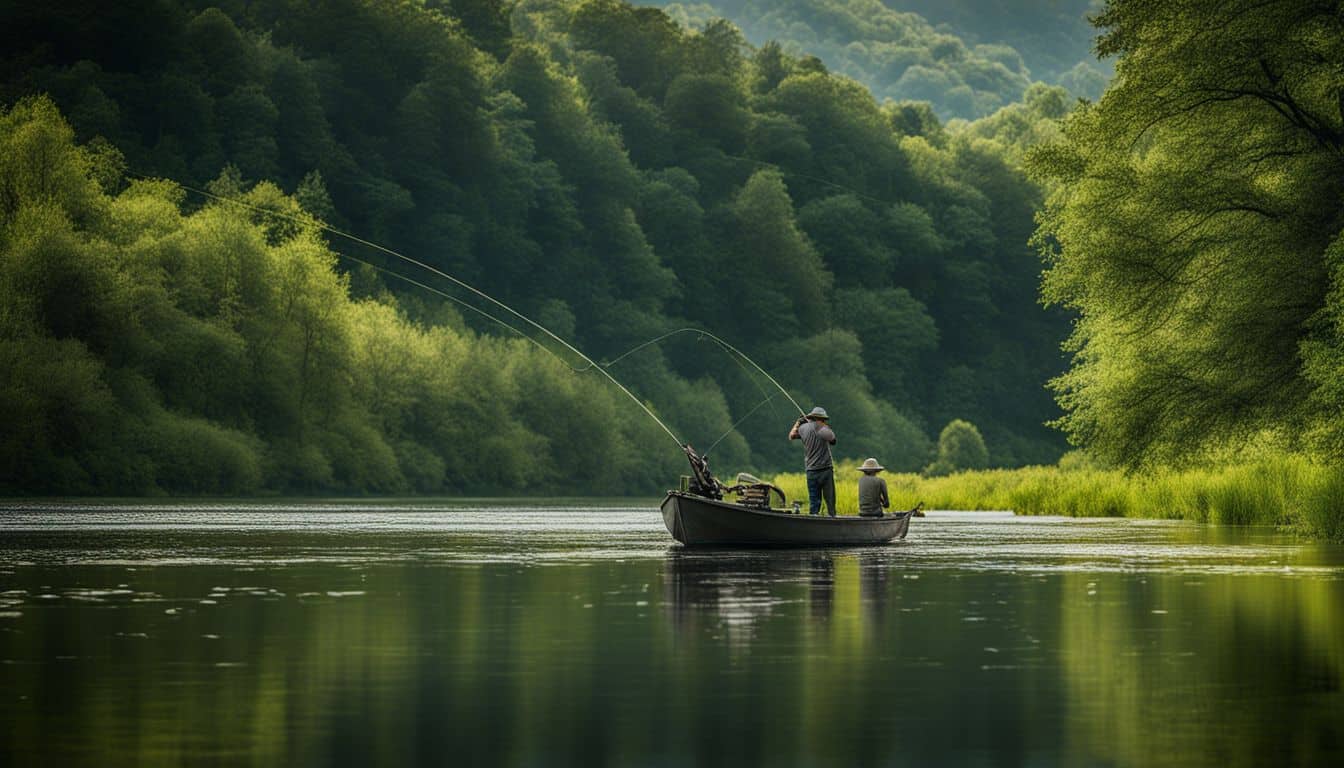
Identifying cover and water changes
When it comes to survival fishing techniques, one important aspect is identifying cover and water changes. This means paying attention to any changes in the environment that may affect fish behavior and their willingness to bite.
For example, fallen trees or vegetation can create hiding spots for fish. Changes in water conditions, such as temperature or clarity, can also impact where fish are located and how they behave.
By being observant and adaptable to these changes, you can improve your chances of success in survival fishing. Remember to keep an eye out for any shifts in cover and be aware of how water conditions might be influencing the fish’s behavior.
Bait rigging and knots
Bait rigging and knots are crucial in survival fishing techniques. Here are some important points to remember:
- Secure hook attachment: Ensuring that the hook is securely attached to the line is essential. This helps prevent line failure when you have a fish on the line.
- Knot tying skills: Learning different knots is important for survival fishing. Practice tying knots like the improved clinch knot or the palomar knot which provide strong and reliable attachments.
- Proper bait rigging: Rig your bait properly so that it stays securely attached to the hook. A popular method is using a snell knot, which allows for better presentation and increases your chances of catching fish.
- Line attachment: Make sure your line is securely attached to your fishing equipment. Using appropriate knots like the arbor knot or the uni-knot can help keep your line connected.
Basic lure techniques
In survival fishing, basic lure techniques are crucial for catching fish. Here are some important tips to remember:
- Choose the right lures: Select lures that mimic the prey of the fish you’re targeting. This increases your chances of attracting a bite.
- Vary your retrieval speed: Fish are more likely to strike at a moving lure, so experiment with different speeds to see what works best.
- Use natural colors: Opt for lures that resemble the color and pattern of the fish’s natural prey. This helps them think it’s a real meal.
- Try different depths: Adjust the depth at which your lure swims to see if it makes a difference in attracting fish.
- Mix up your lure types: Use a combination of crankbaits, spinnerbaits, and soft plastics to see which ones yield the best results.
- Pay attention to water conditions: Adapt your lure technique based on water clarity, temperature, and current flow.
- Make subtle movements: Small twitches or jerks can give your lure an enticing action that attracts curious fish.
Proper fish handling
Properly handling fish is essential when it comes to survival fishing techniques. Here are some tips to keep in mind:
- Use release tools: Tools like a dehooker can help minimize handling and make it easier to release fish without causing harm.
- Wet your hands: Wetting your hands before handling fish helps protect their delicate slime coating, which acts as a barrier against bacteria and parasites.
- Support the fish: When lifting or holding a fish, support its weight with both hands to avoid putting too much pressure on its organs or spine.
- Avoid squeezing: Refrain from squeezing the fish tightly, as this can cause internal injuries. Hold them gently without applying excessive pressure.
- Keep them in the water: If you’re taking photos of the fish, try to do it quickly and keep them partially submerged in water to reduce stress and prevent injury.
- Minimize air exposure: Limit the time fish spend out of the water, as prolonged air exposure can harm their gills and decrease their chances of survival after release.
- Use barbless hooks: Barbless hooks are easier to remove, reducing the handling time required and minimizing injury to the fish during hook removal.
Killing, cleaning, and storing fish
When fishing for survival, it’s important to know how to properly handle the fish you catch. Here are some essential tips for killing, cleaning, and storing fish:
- Angling: Catch the fish using a fishing rod and reel or a handline.
- Gutting: Use a sharp knife to cut open the belly of the fish from the anus to the base of the head. Remove the internal organs.
- Filleting: If you want boneless fillets, remove the skin and bones from the fish by making a cut behind the gills and sliding your knife along the backbone.
- Smoking: Preserve fish by smoking them over a fire or in a smokehouse. This helps to preserve their flavor and extend their shelf life.
- Drying: Hang small pieces of fish in an area with good airflow to dry them out. This method can help preserve fish for longer periods.
- Salting: Cover pieces of fish in salt to draw out moisture and inhibit bacterial growth. This technique is useful for preserving fish without refrigeration.
- Freezing: Place cleaned and gutted fish in sealed freezer bags or containers and freeze them as quickly as possible to prevent spoilage.
- Canning: Cook fish and pack it into jars with brine or oil before sealing them tightly and processing in a pressure canner.
- Pickling: Preserve small pieces of fish in vinegar, salt, sugar, and spices for a tangy flavor and extended shelf life.
- Jerking: Slice cleaned fish into thin strips and cure them with salt, sugar, spices, and smoke for a savory dried snack.
Cooking fish in a survival situation
When you find yourself in a survival situation, cooking fish becomes essential. Here are some tips on how to cook fish when you’re out in the wild:
- Build a fire: Start by building a fire using dry wood and kindling. Make sure to have enough fuel to keep the fire going while you cook.
- Clean the fish: Remove any scales or guts from the fish before cooking. This can be done by scraping the scales off with a knife and cutting open the belly to remove the innards.
- Seasoning: Use salt, pepper, or any other available spices to season the fish. This will enhance its flavor when cooked.
- Cooking methods: There are several ways to cook fish in a survival situation. You can grill it over an open flame, wrap it in foil and bake it in hot coals, or skewer it and roast it over the fire.
- Cooking time: The cooking time will depend on the size and thickness of the fish. Cook until the flesh is opaque and flakes easily with a fork.
- Avoid eating raw fish: While saltwater fish can be eaten raw due to lower parasite risk, it’s still safer to cook all freshwater fish before consuming them.
Tips for Successful Survival Fishing
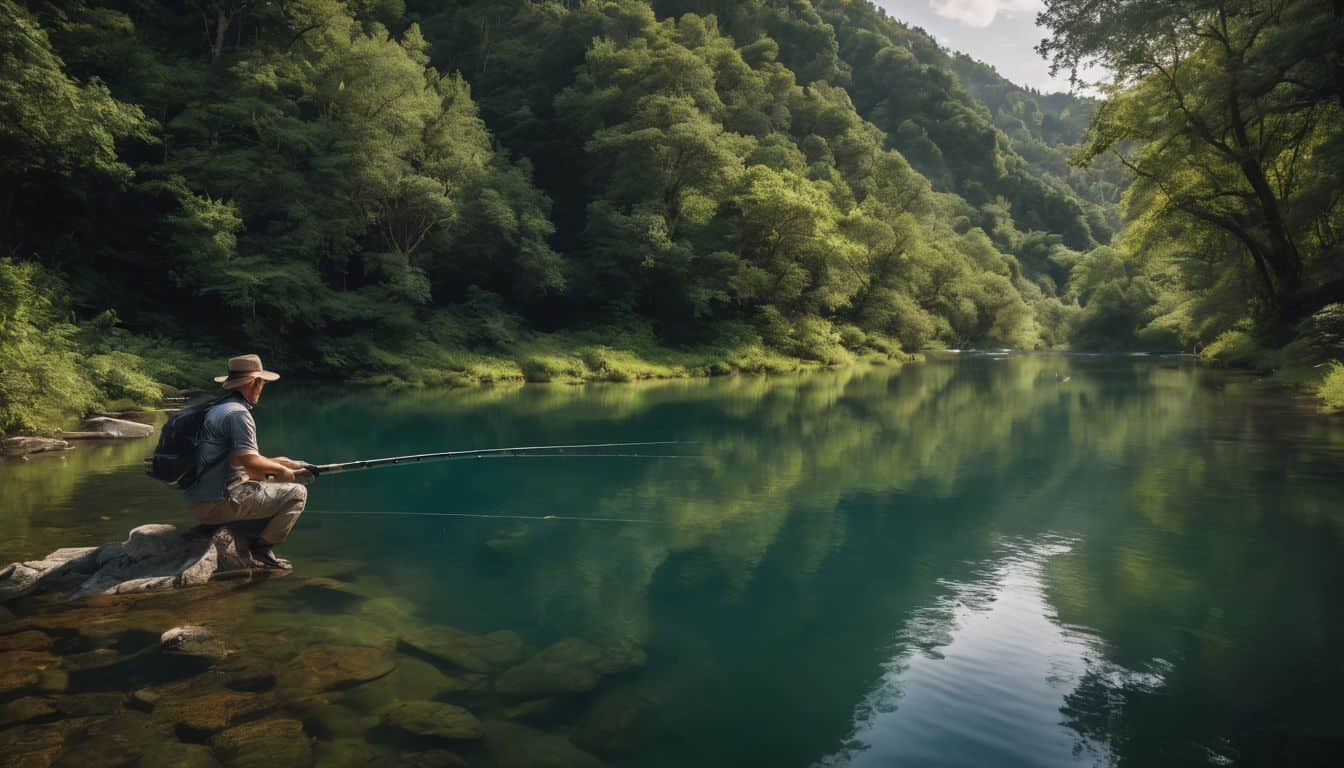
Pack wisely, research the fishing location, prioritize your fishing efforts, learn about the local fish species, practice different fishing techniques, and improve your skills over time.
These essential tips will greatly increase your chances of success in any survival situation. So let’s dive deeper into these techniques for a successful survival fishing experience.
Pack wisely and bring necessary tools
When going fishing, it’s important to be prepared and have the right tools. Here are some essential items to pack:
- Fishing gear: Bring a rod and reel that are suitable for the type of fishing you plan to do.
- Survival equipment: Include items like a compass, knife, first aid kit, and waterproof matches in case of emergencies.
- Fishing supplies: Don’t forget to pack hooks, weights, floats, and extra fishing line.
- Bait or lures: Bring bait that is appropriate for the fish you want to catch, or bring a variety of lures to test different techniques.
- Fishing tackle: Carry a tackle box with all the necessary items like pliers, line cutters, and extra hooks.
- Emergency fishing kit: Have a small compact kit with essential fishing tools that you can easily carry in your backpack.
- Survival gear: Bring items such as a water filter or purification tablets, as well as food rations in case you end up having to survive longer than expected.
Research the fishing location
To be successful in survival fishing, it’s important to research the fishing location before heading out. By understanding the behavior and habits of the fish you’re targeting, such as their migration patterns, foraging habits, and preferred habitats, you can better plan your fishing techniques.
This knowledge helps you choose effective methods to catch fish sustainably while contributing to the health of aquatic ecosystems. Additionally, researching fishing regulations and conservation initiatives in the area ensures that you’re abiding by responsible fishing practices and preserving fish populations for future generations.
So, take some time to gather information about your chosen fishing spot—it will greatly increase your chances of a successful outing!
Prioritize your fishing efforts
To be successful in survival fishing, it’s important to prioritize your efforts. This means focusing on the areas and techniques that are most likely to yield results. Before you start, make sure you know the local fishing laws and obtain any necessary licenses or permits.
Checking these regulations will help you avoid any legal issues while fishing.
Once you’re ready to fish, research the location beforehand. Find out what kind of fish are commonly found there and learn about their habits and preferences. This knowledge will help you better understand where and how to fish for them.
When prioritizing your efforts, consider factors like time of day and weather conditions. Some fish are more active during certain times or when it’s cloudy, while others prefer clear skies.
By taking these factors into account, you can increase your chances of catching something.
Learn about the local fish species
Every fish species is unique, with its own characteristics and habits. When it comes to survival fishing, knowing about the local fish species is crucial. By understanding where they live, what they eat, and their catching techniques, you can greatly improve your chances of success.
This knowledge will help you choose the right bait and gear, as well as use the most effective techniques for catching them. Additionally, learning about the local fish species allows you to respect their habitat and practice ethical fishing.
So take some time to research and learn about the fish in your area before heading out on your next fishing adventure!
Practice different fishing techniques
If you want to be successful at survival fishing, it’s important to practice different fishing techniques. Here are some techniques you can try:
- Angling: Using a fishing rod and reel to catch fish.
- Trawling: Dragging a net behind a boat to catch fish.
- Seining: Using a large net to encircle and catch fish in shallow water.
- Crabbing: Setting traps or using nets to catch crabs.
- Lobstering: Using pots or traps to catch lobsters.
- Harpooning: Throwing a harpoon at a fish to catch it.
- Trapping: Setting traps in the water to catch fish.
- Ice fishing: Drilling a hole in the ice and using baited hooks or small lures to catch fish below the surface.
- Fly fishing: Casting lightweight artificial flies on the water’s surface to attract and hook fish.
- Bowfishing: Shooting fish with a specialized bow and arrow.
Improve your fishing skills over time
To improve your fishing skills over time, it’s important to practice and learn from experience. Try different techniques, such as active or passive fishing, to see what works best for you in different situations.
Research the local fish species and their habits so that you can better understand where and how to catch them. Use proper fish handling techniques to minimize stress on the fish and increase their chances of survival if released.
Remember to always respect nature and follow catch and release practices when appropriate. With dedication and patience, you’ll become a more skilled angler with improved outcomes in your fishing expeditions over time.
Conclusion on Tips For Survival Fishing Techniques
In conclusion, these 17 essential tips for survival fishing techniques growth will help you become a more successful angler in challenging situations. By understanding active and passive fishing methods, choosing the right bait and gear, and learning about local fish species, you can increase your chances of finding and catching fish when it matters most.
Remember to prioritize your efforts, practice different techniques, and improve your skills over time. With these tips, you’ll be well-prepared for long-term survival fishing scenarios.
FAQs on Tips For Survival Fishing Techniques
1. What are some essential tips for survival fishing?
Some essential tips for survival fishing include choosing the right location, using appropriate bait or lures, being patient, and learning different techniques like casting and reeling.
2. Can I catch fish without any special equipment?
Yes, you can catch fish without any special equipment by using improvised tools like a makeshift fishing rod made from a stick, fishing line, and hooks. However, having basic fishing gear can make it easier and more effective.
3. How do I find the best spot for survival fishing?
To find the best spot for survival fishing, look for areas with calm water or natural barriers where fish might gather. You can also observe signs of activity such as jumping or splashing fish.
4. What types of fish can I catch while survival fishing?
The type of fish you can catch while survival fishing depends on your location and the available species in that area. Common examples include trout, bass, catfish, perch, and panfish.
5. Is it important to know how to clean and cook the fish I catch?
Yes, knowing how to clean and cook the fish you catch is crucial for sustenance during a survival situation. It’s recommended to learn proper cleaning techniques to avoid contamination or waste of edible parts


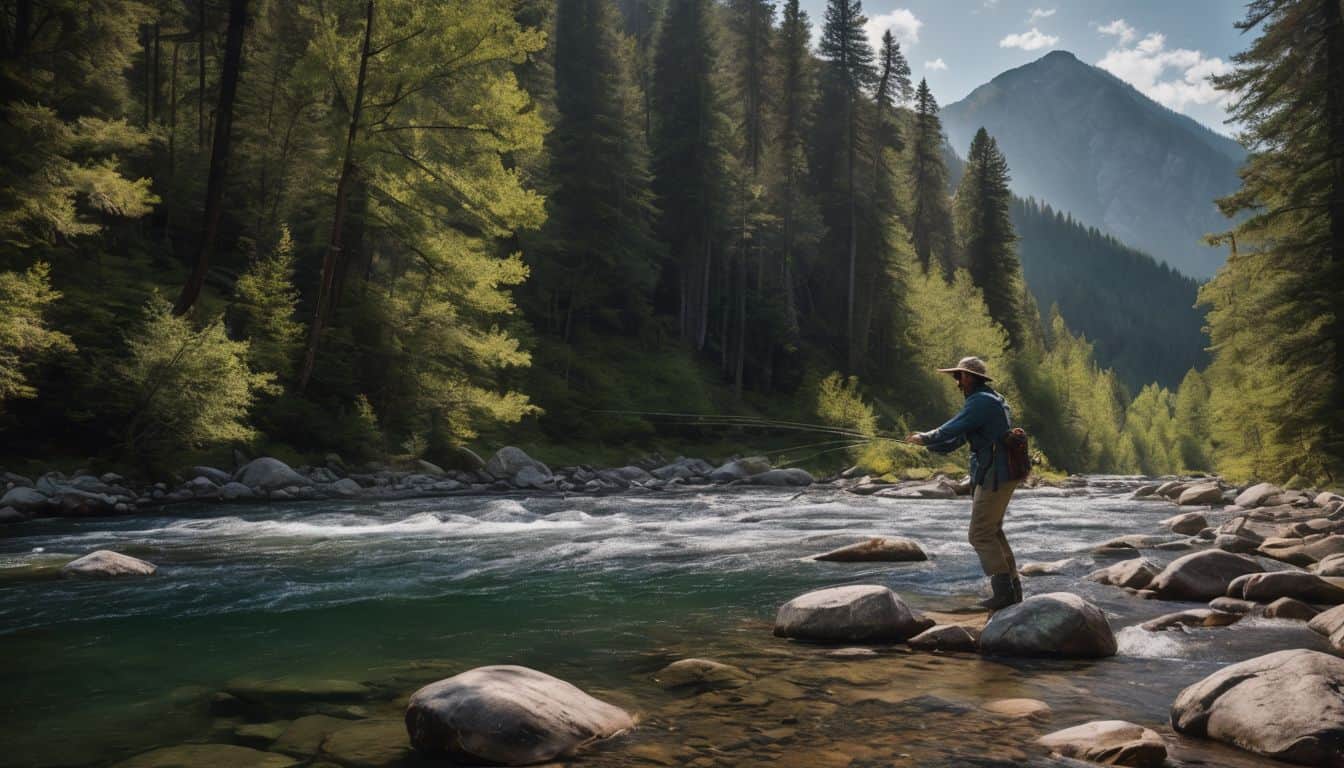
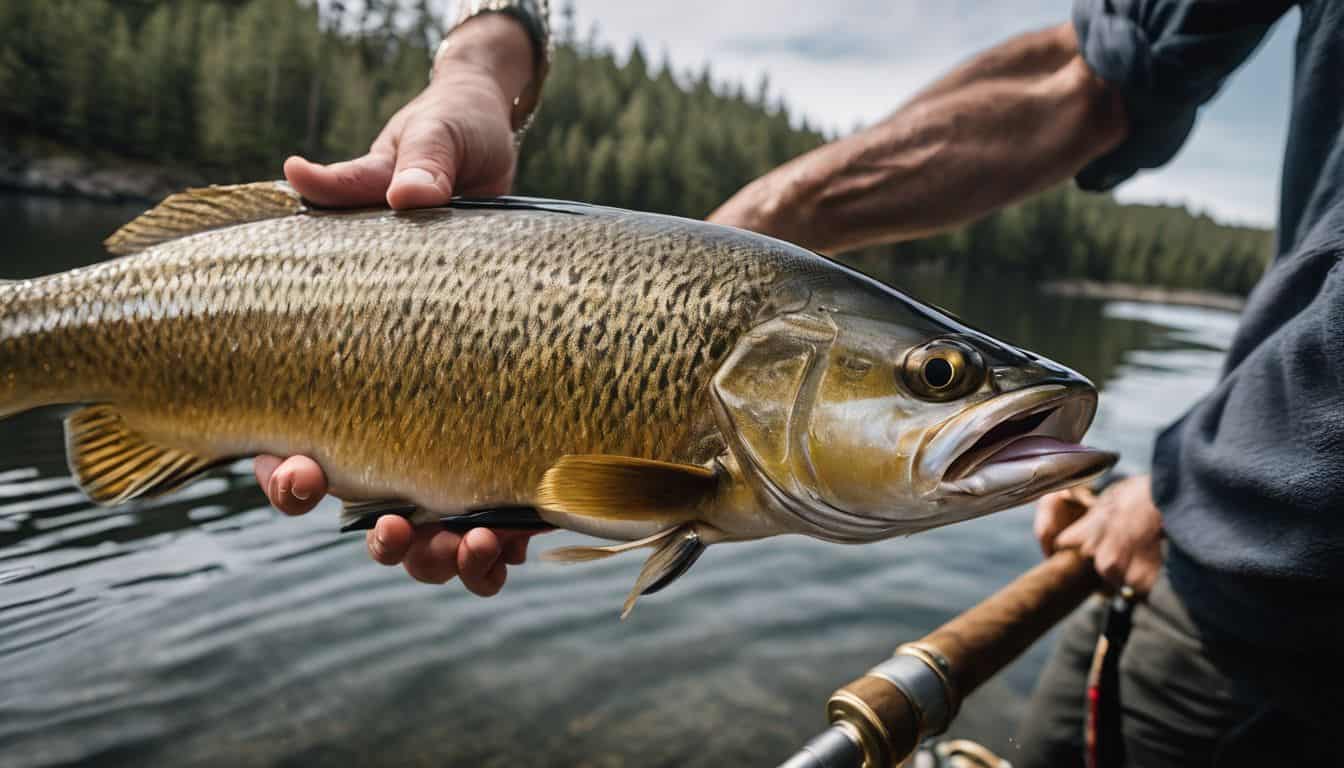
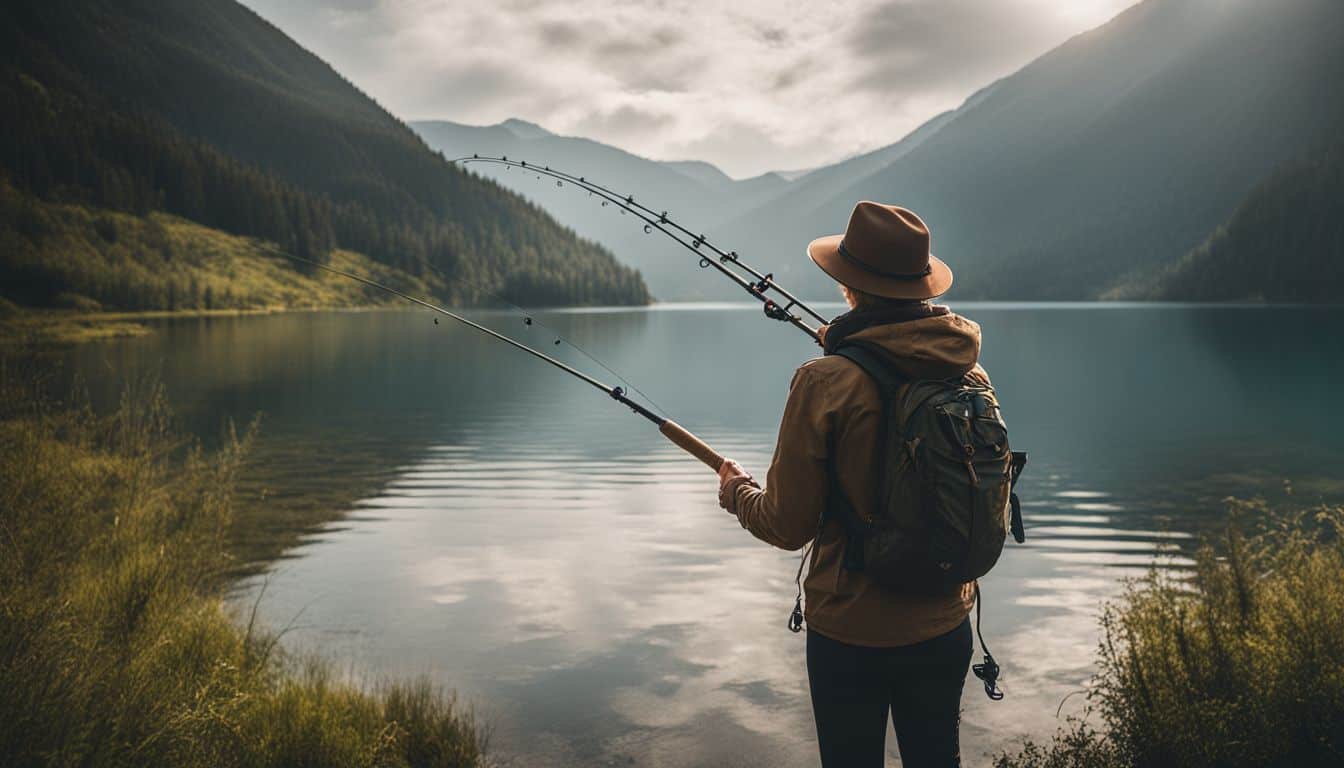
Leave a Reply